I always wanted to visit Luang Prabang, the cultural capital of Laos. Enjoying a professional trip, I finally decided to realize this dream and I was not disappointed. Luang Prabang is a beautiful city that offers an exceptional mix of culture, spirituality and nature.
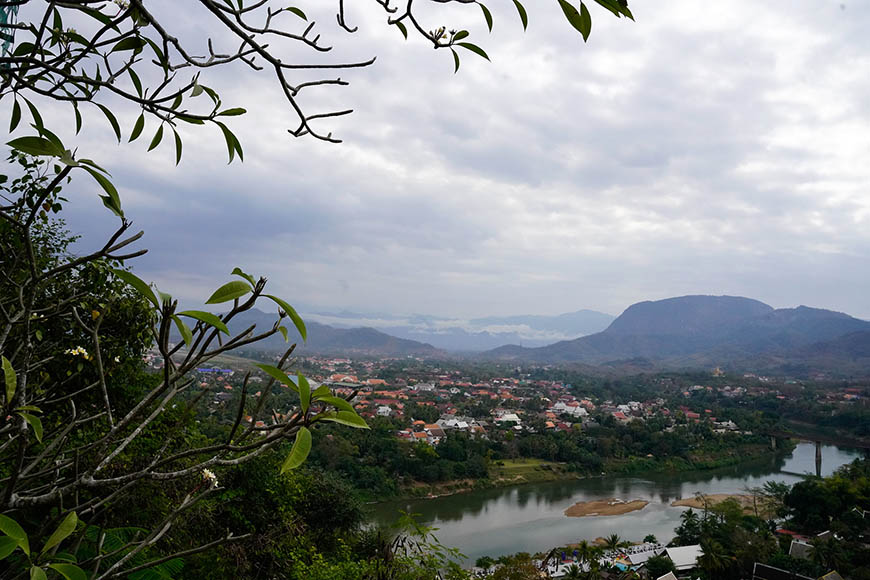
Luang Prabang, view from Mount Phou Si - Photo : mr Linh's adventures
Laos in brief
Each year, an increasing number of tourists visit Laos, a country in Southeast Asia. This forgotten country of the Tour Operators is a destination of choice for travelers in search of adventure, nature and calm, with preserved landscapes, a rich and exciting culture and a warm welcome of its
The country is bordered by Thailand, Vietnam, Burma and Cambodia, which extends over one thousand six hundred kilometers from north to south and extends over an area of two hundred and thirty-six thousand square kilometers. Tourists can see things like the waterfalls of Kuang Si, the caves of Pak Ou, the Bolavens plateau, the Buddhist temples of Luang Prabang and the 4000 islands of Si Phan Don.
Arrival in Luang Prabang
I arrived in Luang Prabang by Speed Train from the capital of Laos, Vientiane. The journey takes about two hours, the word speed here indicating a speed peak of… 168km/h. But let’s not deny our pleasure: it takes 3 hours for a regular train and for the anecdote, Chinese standards require to drive 160 km/ h. Named Lane Xang, this new Laos-China railway was delivered to the Lao operator in Vientiane in October 2021. The line is operated by the Laos-China Railway Company , a joint venture responsible for the construction and management of the railway in Vientiane. The train took the name Lane Xang simply because Laos was once known as Lane Xang – the Kingdom of a Million Elephants). In addition, Lane Xang is also known as Lancang , the name of the upper Mekong in China, which symbolizes Sino-Laotian relations as good neighbors and good partners. The train’s elegant design features red, blue and Laos national flag, while the interior is decorated with Dok Champa motifs, the national symbol of Laos. With a capacity of 720 people, the wagons have snacks and bars, facilities for the disabled and information services in Lao, Chinese and English.
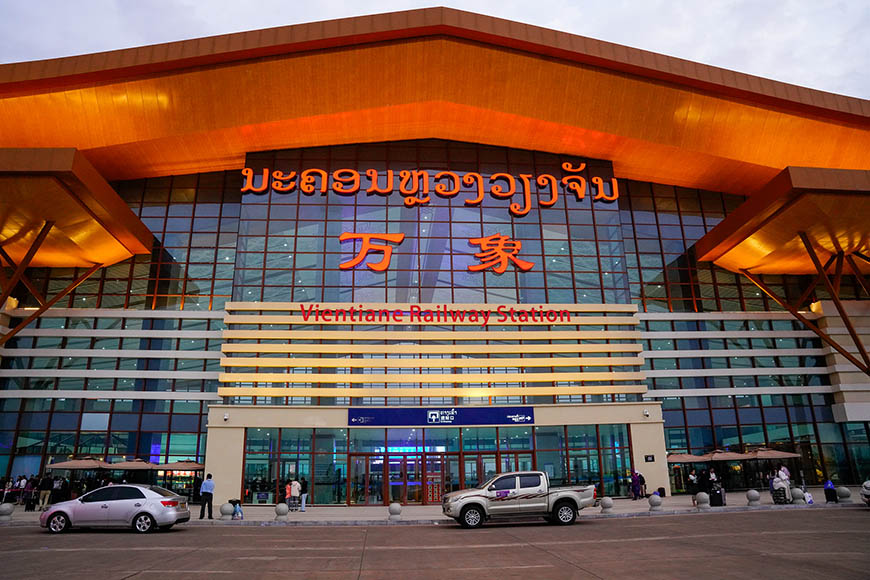
Vientiane, the train station - Photo : Mr Linh's adventures
Good to know:
- • Foreign travelers can purchase high-speed train tickets between Laos and China via the railway’s official app, LCR Ticket.
- • The official application "LCR Ticket" for iPhone and Android allows you to buy train tickets with a credit card (only VISA).
- • To buy tickets on the app, SMS authentication with a Lao mobile number is required. As a result, you can only purchase your ticket once you have arrived in Laos and have installed a Lao SIM card.
- • Tickets on sale 3 days in advance
- • All trains have all reserved seats and are almost full the day before.
- • Laos High Speed Train Schedules and Fares
- • Most trains from Vientiane to Luang Prabang depart in the morning.
- • Most trains from Luang Prabang to Vientiane depart in the afternoon.
- • There is a shared shuttle service. Your hotel staff will arrange it for you. (about 12 km)
Laos High Speed Train Schedules and Fares
Most trains from Vientiane to Luang Prabang depart in the morning.
Most trains from Luang Prabang to Vientiane depart in the afternoon.
There is a shared shuttle service. Your hotel staff will arrange it for you. (about 12 km)
Buying a SIM card in Laos
Unitel SIM cards can be purchased at airports and land borders. They are also easily available in the city’s shops.
A Unitel Net SIM card valued at 10,000 kips includes 300 MB of data and voiceless SMS. You will receive an additional 1 GB valid for 30 days after the registration of your information, and an additional 1 GB valid for the first 7 days of each of the following two months.
Let store staff set up the SIM card so they can enjoy the LCR Ticket app with SMS authentication.
There is also a Voice & Data SIM option, but it is not required for travelers.
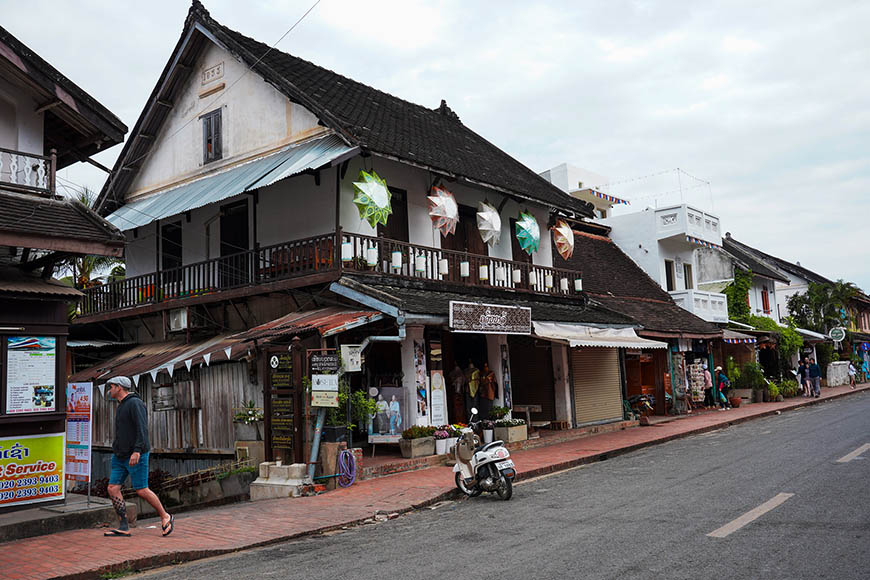
Luang Prabang, the old town - Photo : Mr Linh's adventures
Discovery of the city
The old town of Luang Prabang is a
UNESCO World Heritage Site. It is surrounded by mountains and bordered by the Mekong River. The main street of the old town - Sisavangvong Road - is lined with temples, colonial houses and shops.
Here are some of the must-see sights in the Old Town that I was quick to discover:
The royal palace
The Royal Palace of Luang Prabang is one of the most beautiful architecture in Laos.
The Museum of Luang Prabang (also called "Haw Kham" or "Golden Hall") was once the Royal Palace of Laos. It contains many fascinating historical artifacts that relate the history of Laos during its period of royalty.
Built for King Sisavang Vong in 1904, it bears witness to the combination of traditional Lao style and French influence from the colonial era.
Crown Prince Savang Vatthana and his family took possession of the palace after the death of King Sisavang Vong. After the 1975 revolution, the government bought the building and transformed it to be open to the public in 1995.
Three main parts make up the site: the front wing, which includes the reception area; the throne room (in the middle); and the rear wing, formerly the residential area.
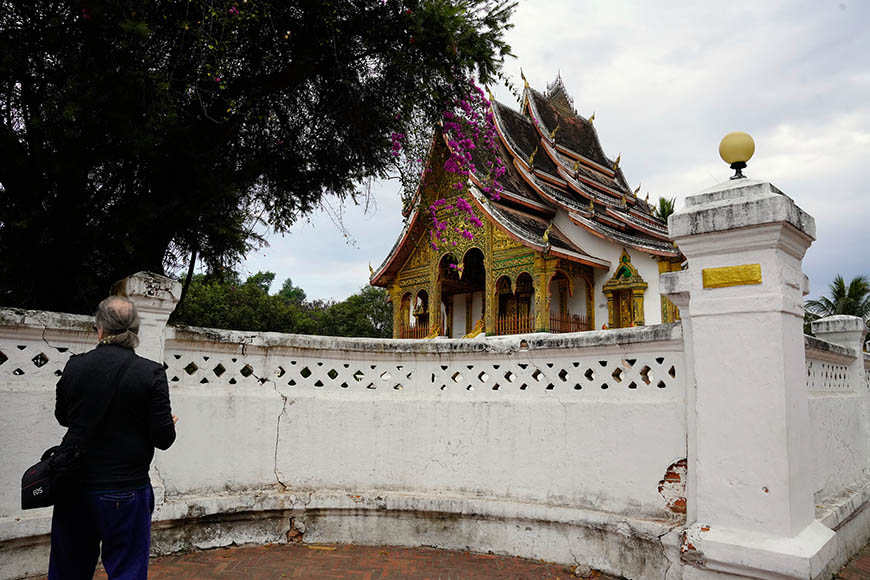
Luang Prabang, the Royal Palace - Photo : Mr Linh's adventures
Good to know:
- • No photos are allowed inside the museum.
- • No bags allowed, so leave yours in designated lockers near the entrance
- • Shoes must be removed before entering the museum.
- • Dress yourself soberly. Women with shorts or short skirts are required to wear a Lao skirt before entering (these are available for rent on site).
- • Opening hours: daily, 8:30 am - 11:00 am and 1:30 pm - 4:00 pm.
The Vat Xieng Thong
Wat Xieng Thong is a Laotian Buddhist temple in the former royal capital Luang Prabang. Founded in 1560 by King Setthathirat of Lan Xang, it is generally considered the most elegant in the country and the most important in the city. Built in teak wood, it is covered with gilding.
The Vat Chom Si
Wat That Chomsi, built in 1804 by King Anourouth and located on top of Mount Phousi (in the center of the city), has become a symbol of the spirituality of Luang Prabang. Wat Tham Phousi Temple Shrine is located halfway up the hill and consists of a fat-bellied Buddha huddled in a cave. Another statue of Buddha lying down is also present in the temple.
At the foot of the stupa is a terrace that offers panoramic views of the whole city. A must, especially in the evening, at sunset, when the golden stupa reflects the last rays of the sun on one of its faces.
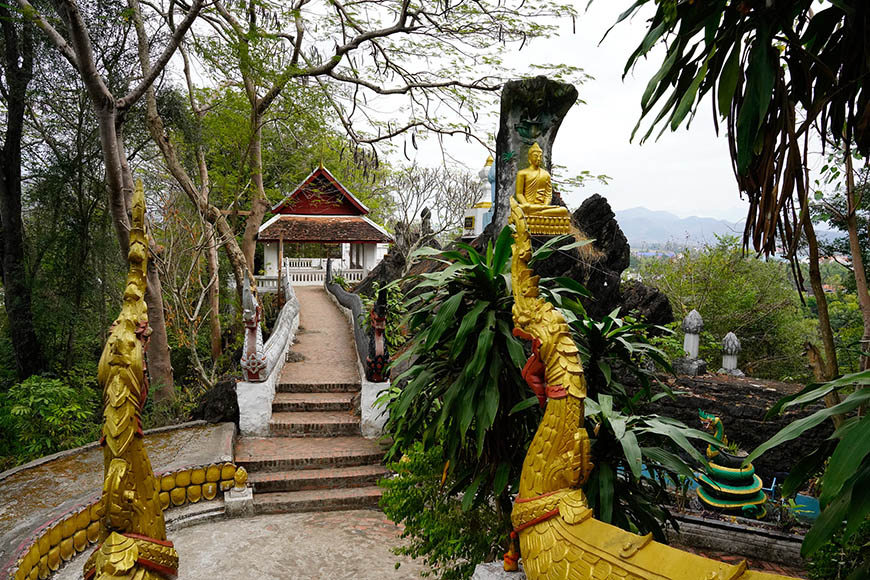
Luang Prabang, the Mount Phou Si - Photo : Mr Linh's adventures
Mount Phousi
Mount Phou Si is a hill about 100 m high, which dominates the city of Luang Prabang. The view of the Mekong and the city from the top of the hill is superb, especially at sunset. However, you must first climb 328 steps to see the 20m high stupa Wat Chomsi. Please note that the Phousi Temple at the top of the hill is a sacred religious site. Please dress accordingly and remember that alcohol consumption here is strictly prohibited.
Good to know:
- • Open daily from 8 am to 5:30 pm (in season)
- • Tickets: 20,000 lak (Lao Kip)/person (free entry for children under 7)
- • Access: Located on the main street about 5 minutes walk from the tourist information center. If there are 3 different ways to reach the top, the main entrance is in front of the Luang Prabang National Museum.
Note: Luang Prabang is a remarkable city due to the presence of many temples in a restricted area.
Although they were almost completely destroyed in the late nineteenth century, they were rebuilt identically and are now a rare heritage in Southeast Asia.
I didn’t have time to visit them all (there are about thirty!); if you have more time than me, do not hesitate to visit them. Their name is:
• Wat Mahathat: an important temple in the city. It houses a sacred stupa housing a relic of the Buddha.
• Wat Aham: another important temple with a great reclining Buddha.
• Haw Pha Bang: still an important temple, known for its golden bronze Buddha, considered one of the most important relics of Laos.
• Wat Mai and its Buddha standing in bronze.
• Wat Manorom, home to a large seated Buddha…
Here are for the most important, but there are others, of lesser importance, less frequented by tourists, which gives them a more authentic atmosphere.
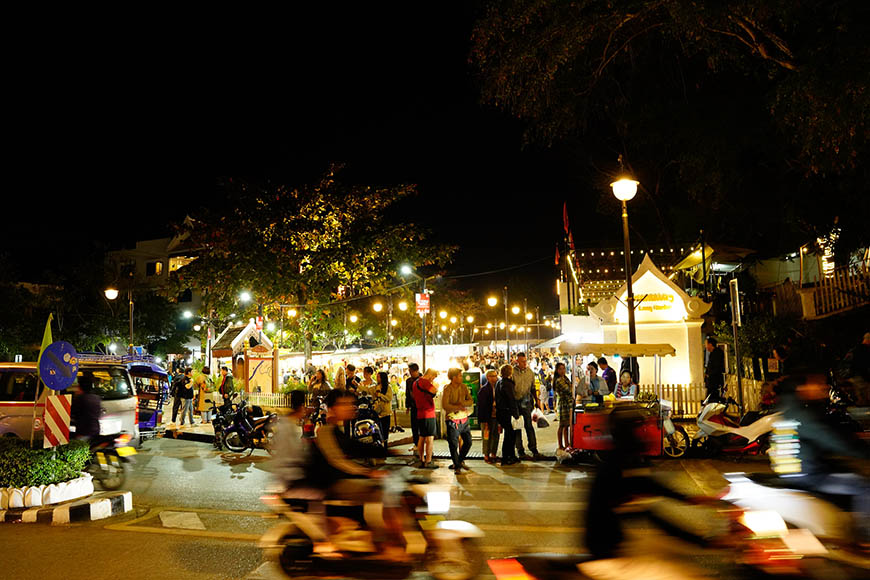
Luang Prabang, the night market - Photo : Mr Linh's adventures
The night market
Every day, the night market is held in the city center, opposite the former royal palace, around 5 pm. This market, planned to last only a few weeks, opened in December 2002, on the eve of Western Christmas; some Hmong and other craftsmen of the region, good traders, sold their products to tourists who were looking for traditional gifts. Initially, this market could have been known as the "candle market"...
Since then, this market has never stopped, to expand today to a few hundred exhibitors. It ranges from chessboard in noble stones to silk scarves, embroidery, woodwork, opium pipes more or less authentic, representations of the Buddha in all its forms, local paintings around the Buddhist symbolism, etc. It is an obligatory appointment, where negotiation is very often a game…
Unfortunately, we see more and more Chinese or Vietnamese products that distort the primary meaning of this walk whose primary purpose was the sale of handcrafted local products.
It ends gradually from 9pm.
Many food and drink shops can be found at both ends of the night market. In a peaceful and almost cozy atmosphere, you can feast on crispy nems, green papaya salads, fried noodles, soups, hearty sandwiches, pancakes or delicious fruit. To bring all this down, there are fruit juice and smoothie vendors who offer delicious drinks based on fresh tropical fruits such as mango, pineapple, papaya, guava or dragon. Not to mention the refreshing local beer, Beer Lao…
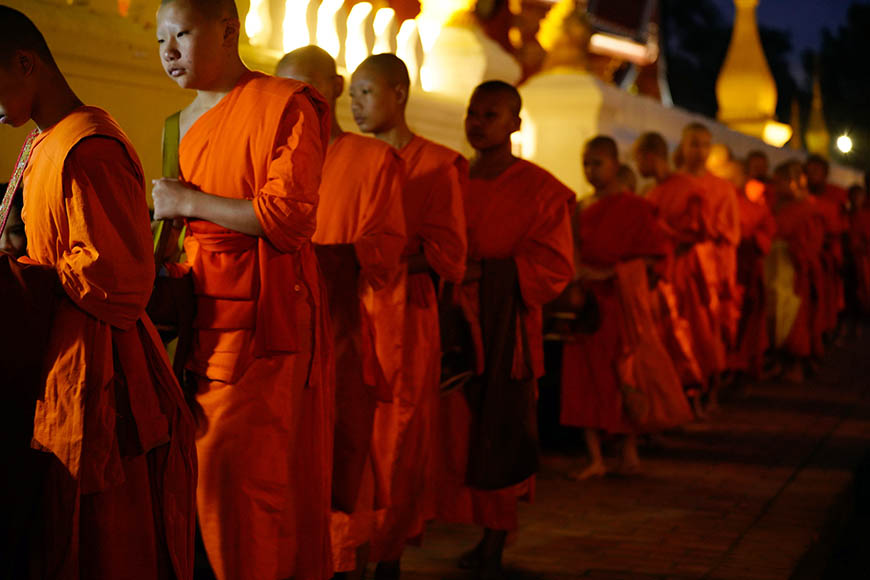
Luang Prabang, the Tak Bat Ritual - Photo : Mr Linh's adventures
Around Luang Prabang
Tak Bat ritual, a thousand-year-old Buddhist tradition
The next morning, very early (around 5:30), make sure not to miss the ritual of Tak Bat, or the morning alms to the monks. Every morning at dawn, Buddhist monks go out into the streets to collect food offerings. This procession ritual is a sacred tradition throughout Laos, but the most famous ceremony takes place in the capital. Moment of emotion guaranteed!
Did you know that? The Buddhist religion recommends material detachment in order to easily connect with nature, to devote more time to prayer and meditation, and to reach nirvana more easily. The tradition is that Buddhist monks are devoid of any superficial accessory. This is why they usually only have a large bowl called "patta", a razor, a needle and clothes. To adhere to Buddhist precepts, the monks, without money or accessories, must then ask alms from the inhabitants to provide for their needs.
Important Notes:
- • Only participate in charity if you are a Buddhist: your participation must have meaning and constitute a personal religious approach. If you do not agree, it is quite possible to enjoy the magic of this tradition from a distance. Anyway, it is important to remain silent throughout the procession.
- • Dress appropriately by covering the shoulders, legs and chest completely. It is absolutely necessary to remove the shoes if you participate in alms.
- • When using your camera, show respect by taking pictures at a respectful distance so as not to disturb the monks and devotees. Do not use the flash to disturb the solemn concentration of the participants.
- • Above all, it is strictly forbidden to touch a monk (especially if you are a woman). It is also best to avoid making eye contact with them. You will show your respect by bowing slightly, as the Laotians do. Finally, the monks must always be above their disciples. This is why you should never place yourself above them (on stairs, a wall, etc.), it is perceived as a lack of respect.
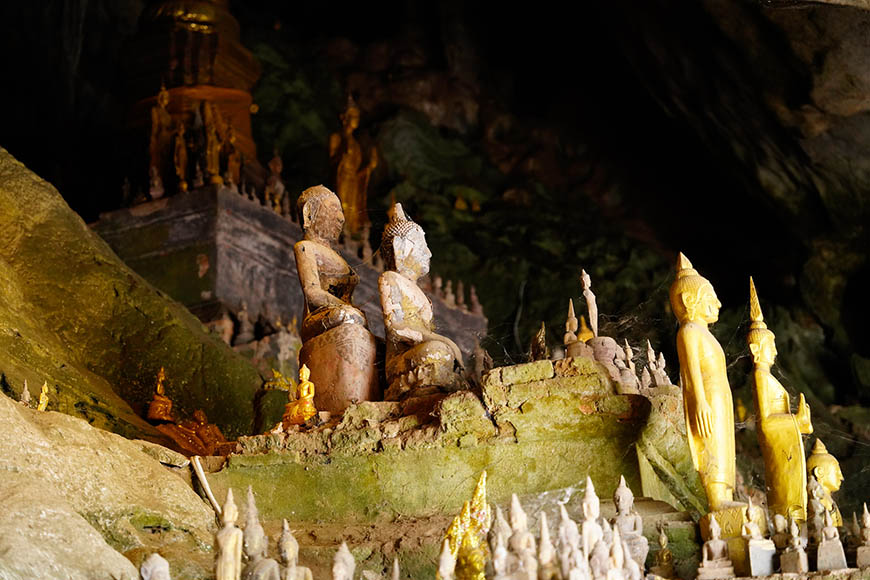
Luang Prabang, the Pak Ou caves - Photo : Mr Linh's adventures
The caves of Pak Ou
Located about 25 kilometers north of Luang Prabang and on the cliff side overlooking the Mekong River, the Pak Ou caves are an important Buddhist site. It is actually two caves, both housing thousands of Buddha statues.
The lower cave, Tham Ting, is the largest and oldest. It contains about 4,000 Buddha statues, some dating from the 16th century. The upper cave, Tham Theung, is smaller and newer. It houses about 2,000 Buddha statues, some of which date back to the 19th century. Buddha statues come in all shapes and sizes. Some are carved in wood, others in stone or bronze. They represent Buddhas sitting, lying, standing or meditating.
This important Laotian pilgrimage site is accessible by boat. It can be reached by car, but I prefer a superb two-hour cruise on the Mekong, crossing landscapes that are both peaceful and wild.
Good to know:
Boats depart from Luang Prabang pier several times a day. The ticket price is about 10 USD.
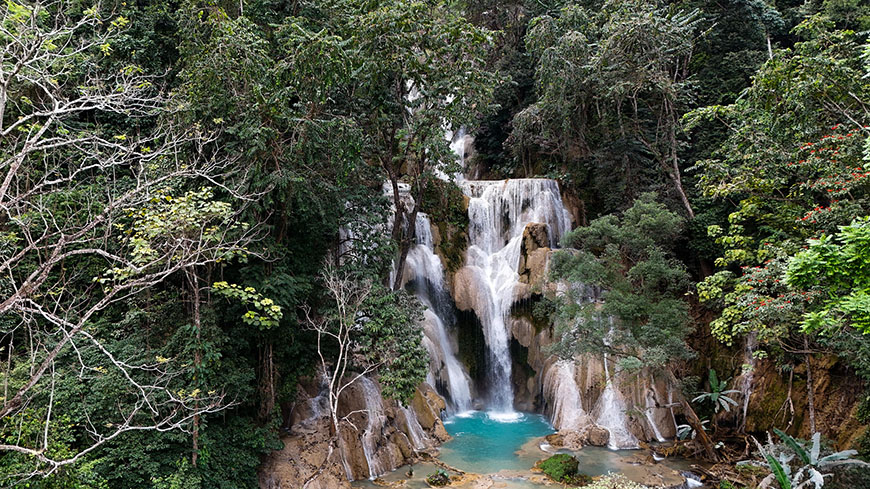
Luang Prabang, the Kuang Si falls - Photo : Mr Linh's adventures
Kuang Si Falls
Kuang Si WaterFalls are about 30 kilometers from Luang Prabang. They are one of the most popular tourist destinations in Laos. The falls consist of various waterfalls that extend over a distance of several kilometers. The main waterfall is 60 meters high and flows into an emerald turquoise pool.
Ideal for swimming or kayaking, Kuang Si Falls is also home to a lush rainforest where various animals such as monkeys, birds and butterflies live.
Good to know:
- • Kuang Si Falls can be reached by car or motorbike. The best way to visit Luang Prabang Falls is by taxi (my option) or tuk-tuk. The journey takes about an hour.
- • The falls are open daily from 8:00 a.m. to 6:00 p.m. Admission is 20,000 kips (approximately $1.50).
.jpg)
Delicious lao cuisine - Photo : Mr Linh's adventures
A few words about Laotian cuisine
Influenced by Chinese, Thai and Vietnamese cuisine, Laotian cuisine is spicy and tasty. The use of lots of glutinous rice, meat, fish, vegetables and aromatic herbs is what characterizes it best. Sticky, ubiquitous rice accompanies a variety of dishes, such as curries, soups or salads. Pork is the most common meat in Laotian cuisine, followed by beef, chicken and fish. Vegetables are an important part of Lao cuisine, whether fresh or dried. Dishes are also often flavored with herbs like mint, coriander and lemongrass. Khao soi (a noodle curry), som tum (a green papaya salad), laap (a spicy minced meat dish served with rice leaves) and larb are all unmissable dishes of Laotian cuisine. But I leave it to you to discover for yourself, I know that you are as greedy as me! By the way, try the Tom kha kai - a chicken soup with coconut milk, lime and lemongrass – and let me hear from you…
Where to stay in Luang Prabang
There is a wide range of accommodation in Luang Prabang, for all budgets. You will choose from guesthouses, hotels or resorts, depending on what suits you best.
If your budget is tight, I recommend the Luang Prabang Sunrise Riverside Pool Hostel with its dormitories and comfortable private rooms. Its plus is undeniably its pool. In the mid-range, you can opt for the Villa Ouis Namkhan Riverside, on the banks of the Mekong River or the Riverside Guesthouse, in the city center. Fancy a luxury stay? The Parasol Blanc and its spa will welcome you with elegance and refinement in the city center, while the modern MyBanLao Hotel is its excellent restaurant that will guide you in your choice.
Getting around in Luang Prabang
The best way to get around Luang Prabang is by walking. The old town is small and within walking distance. It is also possible to get to the sights outside the old town by tuk-tuk or taxi.
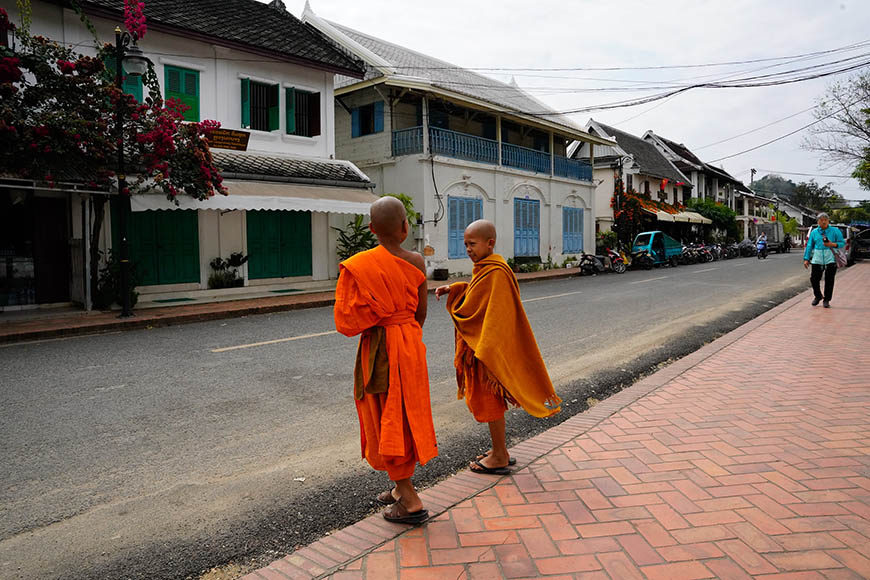
Enchanting Luang Prabang - Photo : Mr Linh's adventures
Practical tips
- • The best time to visit Luang Prabang is during the dry season from November to April
- • English is not much spoken in Laos, I advise you to learn some basic phrases in Lao. This will also show that you are making an effort to adapt to the local culture.
- • Laotian salvation, called "wai", is an important way to show respect. To make a wai, place your palms at chest height and tilt your head slightly. Wai is used to greet people of all ages and social statuses (Sa Bai Dee !). It is also used to say thank you or ask forgiveness.
- • Because the head is considered the holiest part of the body, avoid touching someone’s head, even by accident.
- • Cover your knees and shoulders when visiting a Buddhist temple. Also, ladies, don’t wear clothes that are too tight or revealing.
- • Before entering a temple, remove your shoes.
- • Do not take pictures of monks without their permission.
- • Respect the tranquility and silence of the temples.
- • Laotian culture values respect and politeness. Always be polite and courteous to others.
- • Smile! The warm smile of Laotians is well known. Nothing like a smile to break down barriers and connect with people.
Luang Prabang is a beautiful and enchanting city. It offers a unique experience that combines culture, spirituality and nature. I can only strongly encourage you to discover this favorite destination!